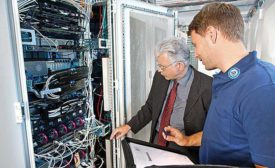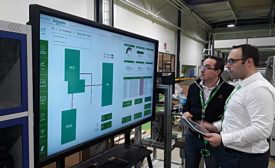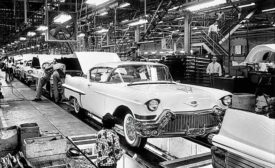Automated Assembly Systems
ASSEMBLY Capital Spending Report 2018: Spending Increases due to Economic Growth and Tax-Cuts
Spurred by tax cuts and economic growth, manufacturers will continue to invest in their assembly operations.
December 6, 2018
Robots Strike Right Tone With Guitar Maker
Taylor Guitars relies on robots to help assemble precision electronics for its world-famous acoustic guitars
November 9, 2018
Random Bin Picking Comes of Age
New technology enables robots to see and act more like humans.
November 7, 2018
Industry 4.0 Maturity Index
A new index provides companies with guidance for carrying out the transformation to Industry 4.0
November 6, 2018
Options for Pick and Place
As electromechanical units and robots increase in popularity, pneumatic and cam-driven systems remain staples in pick and place operations
November 5, 2018
60 Years of ASSEMBLY
For six decades, ASSEMBLY has been the leading source of knowledge about tools and techniques for joining parts into finished products
October 5, 2018
Never miss the latest news and trends driving the manufacturing industry
Stay in the know on the latest assembly trends.
JOIN TODAY!Copyright ©2024. All Rights Reserved BNP Media.
Design, CMS, Hosting & Web Development :: ePublishing












